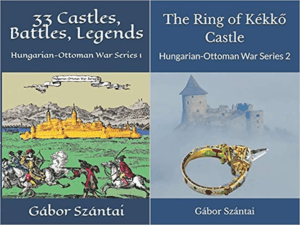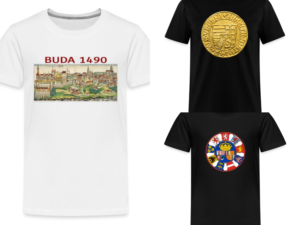King Béla III was also called Béla The Great. Indeed, he was perhaps the most successful monarch of the Árpád dynasty, whose reign is worth studying.

As a result of a treaty, Prince Béla went to the Byzantine court at the age of 15 to be educated there. The ageing and childless Byzantine Emperor Manuel took a liking to the Hungarian prince and soon betrothed him to his daughter and named him heir. However, Manuel had a son in 1169, and the Hungarian prince lost all hope of the Byzantine throne – but the unexpected death of his brother King István III gave him a chance to win another one.

King István III died in 1172, presumably from poisoning. Béla then returned home and announced his legitimate claim to the Hungarian throne. This claim was not supported by his younger brother Géza and his mother Queen Eufrozina, nor by most of the nobility, so the prince responded by asking Pope Alexander III directly for permission to be crowned King of Hungary by the Archbishop of Kalocsa. He reigned from 1172 to 1196.

Thanks to the years that King Béla III spent in Byzantium, the country was on good terms with the empire. He also developed intensive relations with Western Europe, especially France. Maintaining good relations with the papacy was also an important element of Béla III’s foreign policy. After the death of Manuel in 1180, Béla reversed his foreign policy towards Byzantium, which was in decline: he reconquered the Croatian and Serbian territories of the Kingdom of Hungary, and even took Dalmatia and the city of Zadar under his patronage in opposition to Venice.

Béla made the country a European power not only in terms of foreign policy, but also by modernising its domestic affairs. He introduced official writing (the royal chancellery), which had a positive effect not only on government: it is no coincidence that the first major coherent Hungarian language documents, the Funeral Oration and Supplication and the Old Hungarian Hymn to Mary, date from the reign of Béla III, and the oldest Hungarian historical work, the Gesta Hungarorum.

During the reign of King Béla III, the king succeeded in restoring the prestige and power of the country. Throughout his rule, he strengthened the central power, and his actions accelerated the spread of literacy. Meanwhile, Hungary was building intensive relations with Western Europe, especially France, enabling many young Hungarians – including, presumably, Anonymus, the author of the Gesta Hungarorum – to study at the University of Paris.

The second marriage in 1186, when he married Margaret, daughter of King Louis VII of France (r. 1137-1180), reflects the monarch’s Western orientation. An important element in the foreign policy of Béla III was the maintenance of good relations with the papacy, which occasionally brought him into conflict with the Emperor Frederick Barbarossa (r. 1152-1190), who was fighting for Italy.

The chronicler we call Anonymus gave him the epithet ‘Glorious’, but the real recognition came from his grandson, Béla IV, who also gave him the epithet ‘Great’. The armies of King Béla III later took control of Serbia and parts of Bulgaria, replacing Byzantine dominance in the Balkans. In 1186, the king also launched a successful campaign to Halych, reviving the conquest policy of King Kálmán the Bookish, but he only held the principality for two years.
Under his rule, Hungary became a recognized medium power throughout Europe, dominating the Balkans and Central Europe with a reformed state and a rich treasury.

As we said, the Kingdom of Hungary reached the height of its prestige under Béla III, as a “world-political” panorama of the period shows, according to the Welsh historian and court chaplain to King Henry II of England (1154-1189), Giraldus de Barri, Archdeacon of Wales. He considered these rulers to be the most important potentates of contemporary Europe and the Holy Land:
“In 1188 [1187], the year of the Lord’s incarnation, Pope Urban III wore the apostolic crown; in Rome, Frederick, King of the Germans, was emperor, and in Constantinople, Isaac; in France, Philip, son of Louis, was king; in England, King Henry II was king; in France, William in Sicily, Béla in Hungary, Guido in Palestine; for in that year Saladin, Prince of Egypt and Damascus, by the unfathomable but never unjust will of God, triumphant in war, possessed the kingdom of Jerusalem. “

In the summer of 1189, the Holy Roman Emperor Frederick I (Barbarossa) (1152-1190) marched through the country on a crusade to liberate Jerusalem, which had fallen in 1187. In Esztergom, and later in Óbuda, ‘the city of Attila’, the German emperor was greeted with lavish hospitality and magnificent gifts.

It was at this time that Richard, Canon of London, was traveling through Hungary, and when he saw King Béla, he spoke of him with the highest respect. “This man is endowed by nature with many gifts. He is tall in stature, noble in countenance, and if he had nothing else, by the very nobility of his royal countenance, he might be considered most worthy of kingship. He received the army of Christ with hospitality”.

The piety of Béla III was also evident in the release of Prince Géza (who had rebelled against Béla at the beginning of his reign) at the intervention of Queen Margaret, who had left Hungary with the emperor.
Later, tensions arose between Frederick and Isaac, who was passing through the Byzantine Empire, which was only diffused by the power of Béla III. Although Béla protected Isaac, his imperial son-in-law, from attack by the Crusader armies, the Kingdom of Hungary assumed the role of the Eastern Roman Empire’s main power in the northern Balkans, and Béla began to use the Byzantine double cross as his imperial insignia to signal this.

In 1185-86, the first account of the Hungarian king’s income was drawn up. According to this, Béla’s wealth was comparable to that of the English and French kings of the time. As a result of the monarch’s pro-church policy, several new abbeys were built, including in Bátaszék, Zirc, and Szentgotthárd. But it was also during Béla’s reign that the Cistercian order was established in Hungary.
Thanks to the enduring good relations between the king and the papacy, Béla succeeded in his efforts to have his predecessor, King László, canonised, to which Pope Celestine III agreed in 1192.

As the head of the most important Christian state in the East, Béla III also promised to lead a crusade to the Holy Land, but he left it to his younger son, the future András II. After 24 years of rule, King Béla III of Hungary, one of the greatest rulers of the Árpád era, died on 23 April 1196 in Székesfehérvár. Kalán, the Bishop of Pécs, was suspected of causing his unexpected death by giving poison to the king. There is no evidence that the suspicion was confirmed. He is our only king from the Árpád House whose body was found at his burial place and could be identified.

In this excellent video of Autentika, you can see what happened after the death of King Béla III, if you turn on the English subtitles: https://www.youtube.com/watch?v=1pGwRW7dsts

In December 1848, under the ruins of the Basilica of the Virgin Mary in Székesfehérvár, the tomb of a royal couple was unearthed. Contemporary scholars, the historian Pauer János and the archaeologist Érdy Sándor, determined their identity with a significance that still holds today: the tombs were those of Béla III and his wife, Châtillon Ágnes (Anna).

The archaeogenetic research of the House of Árpád was and is based on their remains. With the help of 21st-century technology, Gábor Emese of the Institute of Hungarian Studies has created the best facial reconstruction to date of the great king and his wife.
(Sources: Szabados György PhD, Kásler Miklós, Hungarian Research Institute, and Tarján M. Tamás)

Dear Readers, I can only make this content available through small donations or by selling my books or T-shirts.
Please, support me with a coffee here: https://www.buymeacoffee.com/duhoxoxa
You can check out my books on Amazon or Draft2Digital. They are available in hardcover, paperback, or ebook:
https://www.amazon.com/dp/198020490X or at https://books2read.com/b/boYd81

My work can also be followed and supported on Patreon: Become a Patron!http://Become a Patron!
Become a Patron! Donations can be sent by PayPal, too: https://tinyurl.com/yknsvbk7


https://hungarianottomanwars.myspreadshop.com/all
Subscribe to my newsletter here: https://tinyurl.com/4jdjbfkn

